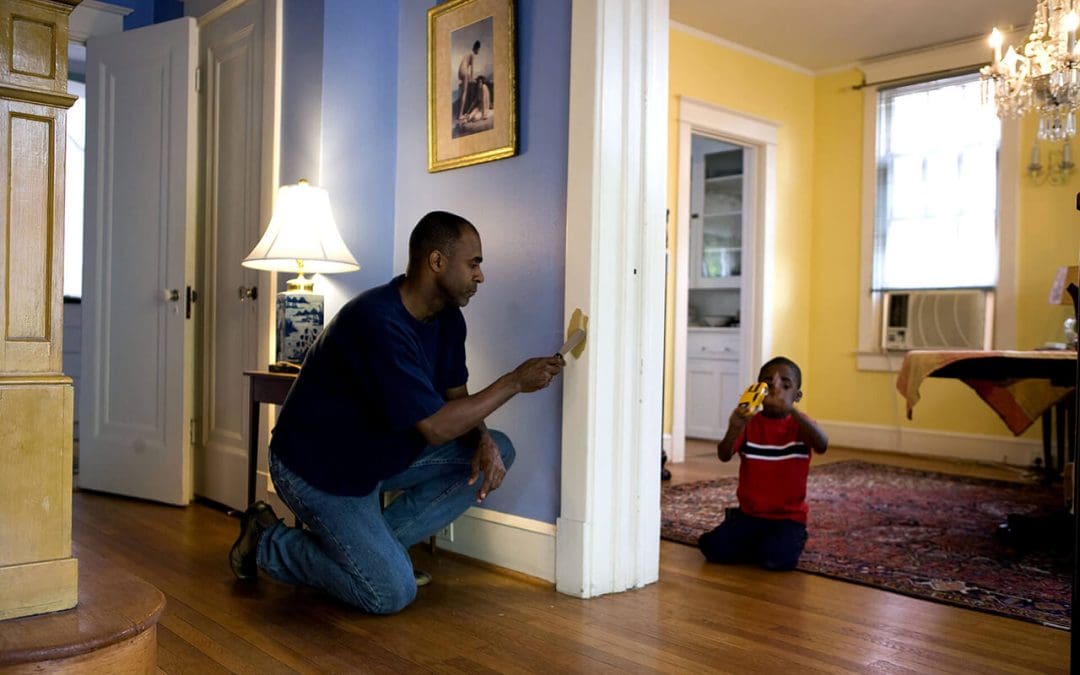A fresh coat of paint can completely change the feel of a room. Maybe you’re refreshing a tired color or trying something bold and new. Painting is one of the simplest ways to update your home. But a lot of people dive in without much planning and end up frustrated halfway through the project. With the right prep, tools, and approach, you can get clean, smooth results without making a mess or wasting time. These interior painting tips will help get you started.
Start Interior Painting with a Clean Slate
Before you even open a paint can, make sure your walls are clean. Paint sticks better to a surface free of dust, grease, or grime. Wipe the walls down with a damp cloth, and if the surface is especially dirty (like in kitchens or bathrooms), use a mild detergent.
It’s also worth taking the time to patch nail holes, fill small cracks, and sand down rough areas. You don’t need to go overboard, but smoothing out imperfections will make a noticeable difference once the paint dries.
Use Painter’s Tape the Right Way
Painter’s tape is your best friend if you want clean, crisp lines where the wall meets the ceiling, trim, or baseboards. But don’t just slap it on and hope for the best. Press it down firmly along the edges to prevent the paint from bleeding underneath. Run a putty knife along the edge of the tape to seal it.
Once you’re done painting, don’t leave the tape on for too long. Pull it off while the paint is still slightly tacky to avoid peeling paint off with it.
Don’t Skip the Primer (Sometimes)
If you’re painting over dark colors, fresh drywall, or patchy areas, use a primer. It helps the topcoat go on evenly and improves coverage. That said, not every situation calls for it. If the existing paint is in good shape and you’re using a similar color, many modern paints are self-priming, which can save you a step.
Still, when in doubt, a quick coat of primer doesn’t hurt, especially if you want the color to look as true as possible.
Invest in Good Tools for Interior Painting
Cheap brushes and rollers shed bristles and leave streaks. A decent angled brush will give you better control for cutting in around edges, and a quality roller cover helps you apply paint more evenly.
You don’t need to spend a fortune, but don’t grab the cheapest tools on the shelf either. If you’re not sure what to buy, ask at the paint counter—they’ll point you in the right direction based on your project.
Mix Your Paint for Consistency
If your project requires more than one gallon of paint, combine them in a large bucket before you start. Even if they’re the same color and finish, there can be slight variations between cans. Mixing them together (called “boxing” the paint) ensures a consistent color across the whole room.
It only takes a few minutes to do, and it saves you from realizing your walls look slightly different in the corners than in the middle.
Work in Sections and Keep a Wet Edge
Painting walls is all about keeping a steady rhythm. Start by cutting in the edges with a brush, then immediately fill in that section with a roller. Working in small areas and maintaining a “wet edge” (where the fresh paint slightly overlaps the previous stroke) helps prevent streaks and lap marks.
Don’t stop in the middle of a wall if you can avoid it. Try to finish one whole section before taking a break to prevent noticeable lines.
Let Each Coat Dry Before Moving On
Even if the paint feels dry to the touch, it may still be soft underneath. Rushing to apply a second coat or move furniture back too soon can lead to smudges and dents.
Check the drying time on the paint can. Most latex paints need at least four hours between coats. If the room is humid or cool, give it a little longer just to be safe.
Frequently Asked Questions on Interior Painting
How many coats of paint do I need?
Two coats are usually best for even coverage, especially if you’re changing colors or painting over patches. Some paints claim one-coat coverage, but a second coat almost always looks better.
What type of paint finish should I use?
Flat or matte finishes hide imperfections best but aren’t very washable. Eggshell and satin offer a nice balance between appearance and durability, especially for living areas. Use semi-gloss or gloss for trim, kitchens, and bathrooms where you want more moisture resistance.
Do I need to move all my furniture out of the room?
Not necessarily, but it’s a good idea to move furniture to the center of the room and cover it with drop cloths. This keeps it out of the way and protects it from splatters.
Can I paint over old paint without sanding?
If the old paint is in good shape—no peeling, cracking, or flaking—you can usually paint over it after cleaning. For glossy finishes, a light sanding helps the new paint stick better.
What’s the best way to avoid roller marks?
Use a quality roller cover and don’t press too hard. Roll in a “W” or “M” pattern to distribute paint evenly, and always work from a wet edge to avoid overlaps.
Rhode Island Real Estate Inspection Services offers professional home inspections in Rhode Island. Contact us to request an appointment for our services.

